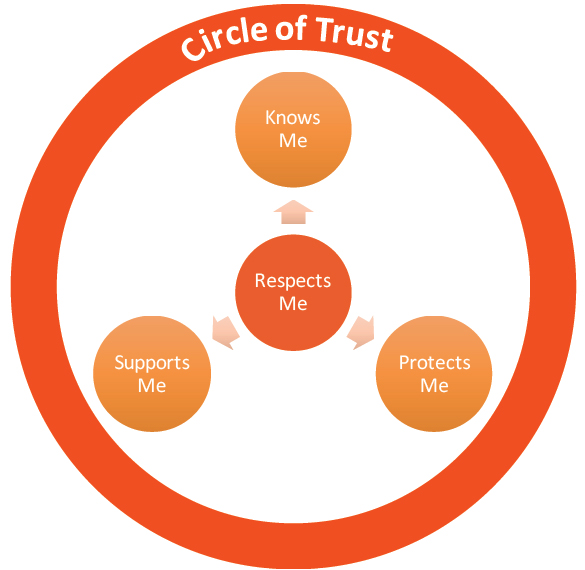Yasir was one of these hard nosed leaders. He delivered amazing results and was the ‘blue-eyed’ boy of the boss. He worked very hard and expected the same from his team. He drove them to the edge but doubled the brands market share in just 12 months. Based on his achievements he was promoted to a senior level position in which he was responsible for a number of brands and became a manager of managers. Soon into his new job, he started losing his shine and his magic seemed to have deserted him.
I was asked to coach Yasir and as part of this assignment I requested to meet his direct reports and a number of other people in his team first. Soon it became quite evident that Yasir was a tough boss. He put a lot of pressure on people and sometimes lost his cool when they weren’t able to step up their game. Sana, one of his brand managers, shared that Yasir often threatened to replace them if they failed to deliver. Furthermore, whenever she was under pressure from the sales team Yasir added on to it by attacking her for not doing her job well. Nigel, another brand manager on Yasir’s team, proclaimed that Yasir was never available to guide him and was frequently reminded that he wasn’t supposed to do Nigel’s job.
Clearly Yasir has been unable to create a conducive environment where his team was engaged and supported to deliver the demanding needs of the targets ahead of them.
Simon Sinek in his latest book Leaders Eat Last makes a strong case that the first and foremost role of a leader is to make sure they protect their team from external dangers. That they feel safe enough to push hard, collaborate and take risks.
In my coaching work I have found these concepts to be very true and I have dubbed it the ‘Circle of Trust’. Before leaders can expect their team members to deliver they have to create an environment in which people feel trusted, safe and encouraged to put in their best efforts towards a common purpose.
To create a ‘Circle of Trust’ leaders have to make sure that their team members feel that their leader:
- Respects me
- Knows Me
- Protects Me, and
- Supports Me
Lets look at all the elements that go into each of these.
Respects Me
Central to creating a Circle of Trust is the way a leader treats team members. Whether they are courteous and polite, treats them fairly, is open enough to tell them how it is or trusts them to do the right thing. It’s all about whether a leader treats subordinates as human beings with their individual idiosyncrasies or as a cog in the machine, i.e. a resource that just needs to be used to the maximum.
Knows Me
Although I know that people across the world could see this differently, I personally believe that you can’t build significant levels of trust if you don’t know each other at a deeper personal level. How can I trust my boss if he doesn’t know what drives or motivates me, what my aspirations are, what I’m good at or enjoy doing, or even, for that matter, knows what frustrates me. If he knows only the “office” me and not the “real” me, I won’t fully trust him with helping me achieve personal success.
Protects Me
I don’t know many leaders who can say they don’t know their team members or that they don’t respect them. Leaders often find it difficult to create an umbrella of safety for their team members. An umbrella that protects them from internal politics and heavy handed co-workers or bosses. An umbrella which allows the leader to stand up for their team when they need it and prevents them from speaking negatively in their absence. Of course the idea is to steer them clear from potential pitfalls.
Supports Me
Last but not least, team members would expect their bosses to have their best interest at heart and to guide them when they are stuck. They would like their leaders to involve them in making decisions about them. Along with this they want their opinions heard and decisions that impact them explained by their leader. And of course, finally their leader should explain what is expected of them, provide them with the required resources to do their job and give suggestions on how they can improve themselves.
Only if a boss is able to create this ‘Circle of Trust’ and team members feel safe enough to take risks will they give their absolute best. This means working without the fear of failure, collaborating without being afraid of getting stabbed in the back and trusting their colleagues to do what’s right. People want to be looked after when the ‘going gets tough’, and if you take care of them they’ll take care of the business.
Like what you read? Subscribe to the Keijzer Community and get updates to your inbox. You’ll also get a free download which will help you take your leadership teams through a growth model which will help them mature on a personal and professional level.




